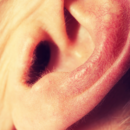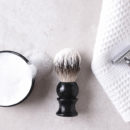
In a study done on women who had no children, 60% said they were not trying to get pregnant. There are different forms of birth control that can benefit the majority of women who are not trying to get pregnant.
Although pills are a common form of birth control, they might not be the right solution for women who never want to have children. So, what are the options in this case? Essure surgery is one of them.
Keep reading to learn five things about the Essure device.
1. Who Gets Essure Surgery?
Essure surgery is a form of birth control intended for women who don’t want to have any children. Implanting Essure actually requires no surgical incisions unlike other forms of female sterilization.
Instead, the doctor will insert the implant through the vagina, past the cervix, and into the fallopian tubes. Scar tissue will build up around the insert over time. This builds a barrier to prevent sperm from reaching the eggs.
2. Can Essure Be Removed?
Some women have their Essure removed to avoid experiencing long-term negative side effects. Essure removal involves a doctor creating a hole in the fallopian tube to remove the Essure coils. They will then close up the incision that they made.
You’ll need general anesthesia to undergo this procedure. Hysterectomies are another way to remove the device.
It’s important to note that removing the device won’t help you regain the ability to become pregnant. If you want to get pregnant, Essure reversal is recommended instead.
3. What Are the Risks of Essure?
According to the FDA, Essure is still an option for a majority of women who want a permanent form of birth control. Despite this, there are women who experience negative side effects from the device. Some women report having:
- Persistent pain
- Abnormal bleeding
- Allergic reactions
- Perforation of the fallopian tubes or uterus
Some women are at risk for serious problems so it is best to ask your healthcare provider about the best method of birth control for you.
4. What Is the FDA Doing?
Because more women are coming out with Essure surgery side effects, the FDA is requiring a new warning label. The label will describe the serious Essure surgery complications that might include the following:
- Infections
- Pelvic pain
- Heavy periods
- Pain during sex
- Headaches
- Extreme fatigue
The FDA is also comparing the risks of Essure surgery tubal ligation to the risks of unplanned pregnancy and other complications.
5. When Can You Remove an Essure Device?
If you want to undergo Essure removal surgery, contact your doctors right away. Although the device can be removed at any point in time, Essure is easier to remove within the first few months of the procedure.
Recovery time after removal will depend on the method of removal and how long you have had the device planted. Some patients experience relief of symptoms within a few days while it takes others a few weeks.
Should You Get an Essure Device?
Essure surgery is not quite a surgery at all. The procedure involves implanting a device into the fallopian tubes as a permanent form of birth control.
Women who don’t want to get pregnant should know the risks of Essure before opting for the procedure. Although you can get an Essure removal later on, consider what you’ve learned from this guide before making a final decision.
For more articles on women’s and overall health, check out the other posts on our blog.

























